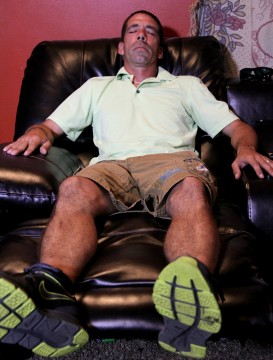Surgeons at Ohio State are attempting to stop painful cluster headaches in their tracks with the help of a newly developed device.
Dr. Brad Otto, the principal investigator for the clinical trial that’s testing the devices, said in an email that cluster headaches are rarer and more painful than migraines.
According to a release from the OSU Wexner Medical Center, an estimated 400,000 people in the United States experience chronic cluster headaches, which are more common in men.
Cluster headaches are also known as “suicide headaches” because of the intense pain they cause, Otto said.
During the surgery, surgeons insert a device called a neurostimulator into the sphenopalatine ganglion — a nerve bundle behind the nose known to play a major role in severe headaches, Otto said.
The devices were created by Autonomic Technologies Inc., a company that develops and commercializes medical devices for headache treatments, according to its website.
“Our hope is that by blocking or short-circuiting thatinvolvement, it will help treat cluster headache,” Otto said.
The neurostimulator is activated by another device that looks like a cellphone. The patient only needs to hold the device up to their face once they feel the onset of a headache, and it will essentially “shut off” the process, said Dr. Peter Larsen, an oral and maxillofacial surgeon who is also involved in the trial.
Patients of the clinical trial do not pay anything to participate. Instead, the study is funded entirely by Autonomic Technologies. Dina Aziz, director of research administration at the Wexner Medical Center, would not disclose the cost of the clinical trial.
So far, the clinical trial has only inserted the neurostimulator into one patient, though another is already scheduled for surgery, Larson said.
The surgery was performed Aug. 13 at the Wexner Medical Center by Otto and Larsen. Paul Alterio, 39, from Lexington, Ohio, was the first to undergo the procedure.
Before the surgery, Alterio suffered from multiple cluster headaches every day for four years, he said.
“I would be in extreme pain anywhere from 15 minutes to three hours,” Alterio said. He described the experience as a stabbing sensation on the right side of his head.
He experienced cluster headaches three to four times per day and medicine did nothing to help, he said.
Searching for a solution to his pain, Alterio’s headache specialist directed him to the neurostimulator clinical trial at OSU. After confirmation that Alterio met the participant requirements, he went through the surgery.
In order to allow time to heal, he will not receive the device to activate the neurostimulator for another two months or so, Alterio said.
Even then, he might not have a neurostimulator that is “activated,” because of the study’s double-blind procedure, Larsen said.
“The clinical trial is a placebo-controlled, double-blinded crossover study,” said Larsen. “That means that neither the patient nor the doctors know if they’re getting an activated device or not.”
That means for the first part of the study, half of the surgeries will implant a device that is not ‘turned on,’ Larsen said. After a period of time, the group with the placebo cross over into the activated group.
“They don’t have to have another operation,” Larsen said. “We just implanted a device that’s not turned on yet — but it can be activated and turned on.”
The neurostimulator is not yet approved by the Food and Drug Administration.










